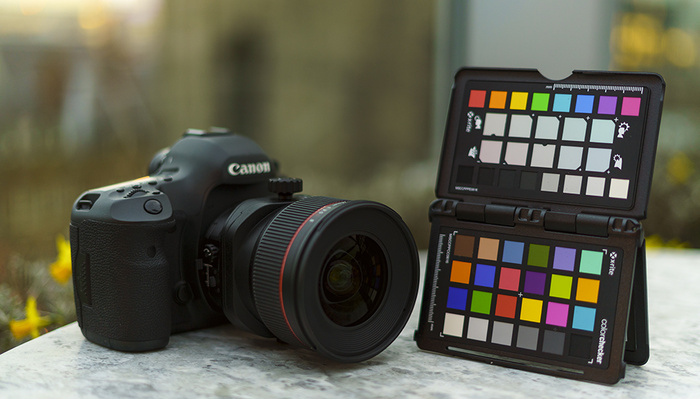- How To Use Colorchecker Passport Video
- X Rite Colorchecker Passport Software
- How To Use Colorchecker Passport
- Colorchecker Passport Plugin
- Colorchecker Passport Desktop Application
Digital ColorChecker SG with Generic EOS R5 Camera Profile For the sake of this process, note that I used the White Balance picker tool in Capture One Pro and selected one of the neutral gray cells on the target, and that set the custom white balance of the image to 5757 Kelvin and a Tint of -2.8. With your new NEW ColorChecker from X-Rite, you can expect expert results at capture with ideal color balance, enhanced highlights and shadows and perfect exposure. REGISTER YOUR COLORCHECKER Receive additional 6 month warranty when you register your ColorChecker. For some time now I've been meaning to move away from Lightroom and make Capture one my main RAW processor. Up until recently, there was only one thing that prevented me from making that switch completely and that was the lack of support for the ColorChecker Passport. Colors are extremely important to me and the passport from X-Rite proves very.
“It’s been a long-standing request from Capture One users to be able to take advantage of our ColorChecker products to produce ICC camera profiles.” says Liz Quinlisk, Global Business Unit Manager, Photo & Video at X-Rite Incorporated. “It’s been something we’ve been working on and now our customers can immediately try out this pre.
In the last article How to create ICC profiles for Capture One – Part 1, I gave an outlook on the software I will review. Before we can start creating ICC profiles with one of the software solutions, we need to do some preparation. During my work on these articles, I run into a bug in Capture One Pro 12 that prevented me to save the TIFF file needed for the profile maker software. This bug has been fixed with Capture One Pro 12.0.1, so you should make sure to install the update before moving on.
However, if you are still using Capture One Pro 11 or earlier you can just read on. I exported the TIFF files for my review with Capture One Pro 11 and can use the created profiles in both versions.
- Take a picture of a ColorChecker Passport Photo target with each camera we want to create an ICC profile for.
- Prepare CaptureOne to save a TIFF file with specific settings.
- Familiarise yourself with the filename conventions of Capture One; otherwise, your new profile is not grouped together with the built-in profiles.
So, let’s get some pictures done.
I used the following setup to shoot my target:
- Calumet Portable Shooting Table with a translucent plate
- Elinchrom ELC Pro HD 500 with Elinchrom Rotalux Deep Octabox 70cm (internal and external diffusor + Elinchrom Frost Deflector)
- Light meter (Gossen Variosix F)
- Tripod for the camera and remote trigger
This may sound quite like overkill just to shoot some targets. But, I just wanted to make sure that the light was reproducible when shooting the target with my different cameras. I mainly used the shooting table because I had it available and it seems to be convenient for me.
The Elinchrom studio strobes have a consistent colour temperature and fast recycle time. I took the images at ISO 100 and 1/125s at F8 with the following camera and lens combinations:
- Canon EOS 5D Mark III with Canon EF 1.8/85mm
- Canon EOS M with Canon EF 1.8/85mm and Canon EF-EOS M adapter
- Pentax 645z with Pentax FA 4.0/120mm Macro
The Pentax medium format camera is not officially supported by Capture One, but with some workarounds, it is possible to use the DNG files. Unfortunately, this means that the colours can be way off, which has been the case in older Capture One versions. Since Capture One Pro 10, the Generic DNG profile is pretty decent and the colours are good in most situations.
Prepare a process recipe in Capture One
To make things easier later on I added another process recipe to Capture One. Luckily, all chosen profile makers are using the same settings so here we go.
- 16bit TIFF
- uncompressed
- Embed camera profile
You should select a proper name for your process recipe, I named mine “ColorChecker ICC Profile” just to be sure not to select it accidentally for my normal work.
Capture One filename conventions
How To Use Colorchecker Passport Video
In case you do not follow the Capture One filename conventions for profiles, your new ICC profiles will end up under Other in the ICC Profile dropdown menu. This might not what you expect and at least I do like to find my new profile grouped with the profiles provided by Phase One. This is pretty easy to achieve, just follow the naming rules.
In general, the profile name has the pattern <Brand><Model>-<Profile>.
For example:
- CanonEOS5DMk3-Generic
- CanonEOSM-Generic
- GenericDngFile-Neutral (the standard profile for all DNG files including the ones created by unsupported cameras)
You can find all the profile names used by Capture One on MacOS with the following commands in the Terminal application.
X Rite Colorchecker Passport Software
- locate .icm | grep Capture One | grep Input | awk -F”/” ‘{print $NF}’ | sort | uniq | less
Keep the part in front of the dash, the part after the dash can be used to describe your profile. For example, GenericDngFile-Pentax645z_Film will show a profile called Pentax645z_Film under DNG file.
How To Use Colorchecker Passport
Some additional notes
Colorchecker Passport Plugin

Colorchecker Passport Desktop Application
As my work is general photographic, I will not cover all the details that are required to create an ICC profile for reproduction work.
Furthermore, my special thanks go to my assistant Flower who helped me to create the target images by working out how to operate the ColorChecker Passport target.
